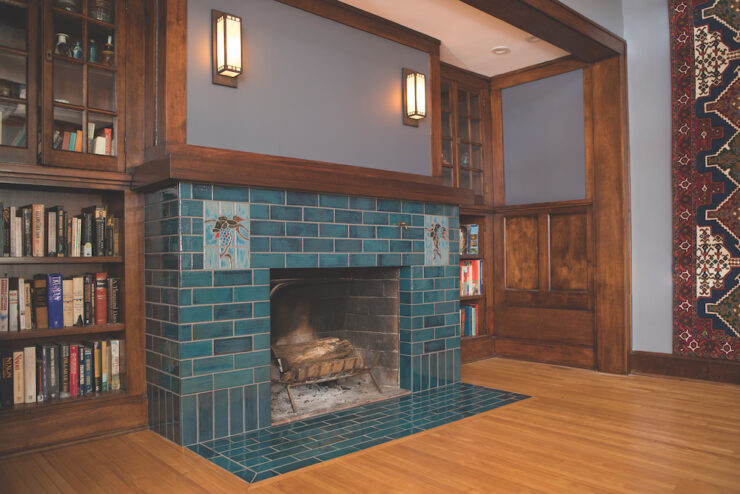Have you ever heard cat paws prancing upon your roof? No? Well, back in Victorian Britain, when most roofs were created from that iconic fired red clay, the nightly frolicking of rooftop cats gave rise to the word tile. Seems the ruckus evoked the French word, “tuile,” which itself is originally from the Latin word “tegula,” meaning a roof tile.
Cat antics aside, the provenance of tiles extends far back into pre-recorded history. Evidence of some form of ceramic tile can be traced 25,000 years into the past. There are fine examples of Egyptian tiles dated to 4,700 B.C. During modern archeological digs worldwide, ancient Greek and Roman painted tiles continue to be unearthed.
From the 12th to 16th centuries tile making was a high art — laborious and intensive. Potters traveled far and wide, often using local clays, which they cut, shaped, carved, molded, dried and glazed with materials such as lead ore. Then they fired. Expensive and lavish, tiles were used in religious and royal architecture, eventually decking the mansions and palaces of gentry and rich merchants, out of reach for the average folk.
Tile making faded from use somewhat during the 1600s, but hand-painted glazed tiles again became the rage the next century — the Dutch Golden Age — when legendary Dutch merchants uncovered the ancient artifacts during their global conquests. Soon, Holland’s fabled artisans handily replicated the techniques, restoring the glory of this art.
During the aforementioned cats-prancing-on-rooftops Victorian era, the porcelain manufacturer Herbert Minton revived encaustic tile making and developed dust-pressing, a common modern manufacturing method. This mass production process finally created an affordable product available to the masses.
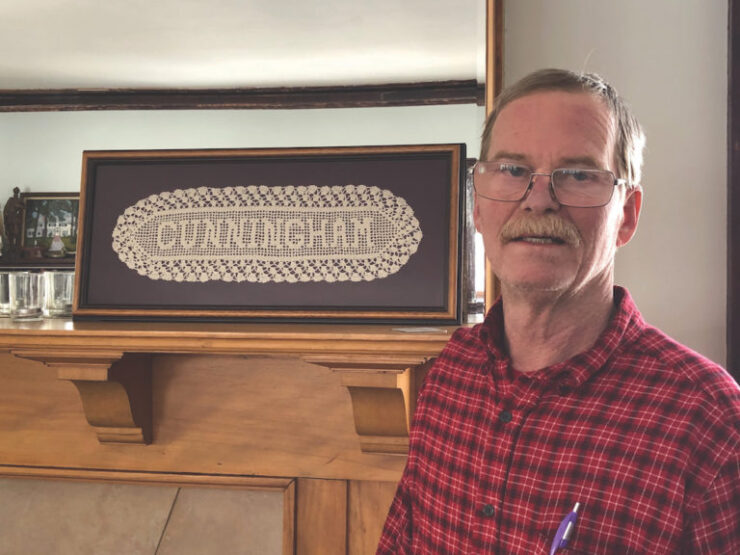
A Kenwood restoration
Let’s fast forward to a more recent time – a home restoration by Southwest Minneapolis residents Howard and Stephanie Fink.
In 2004, in order to accommodate their growing family and visits from their grandparents, the couple were seeking “an older house with three to four bedrooms, spaces that felt homey with good flow between the common areas and easy accessibility to the main floor,” Howard Fink says.
They scored a beauty, moving from a smaller Armatage house to their current spacious Kenwood residence.
“The first things we saw when we walked in the house were high ceilings, lots of windows, alluring stained oak dining room entries and a buffet with stained glass mosaic windows,” Fink recounts.
They were smitten. The location — close to downtown, Uptown, restaurants and the lakes and trails — cemented their decision.
Fink, a self-confessed perfectionist, undertook a precise and loving renovation that included the living room with its remarkable Craftsman-looking fireplace.
The fireplace woodwork had been totally painted, and as with many remodeling projects, secrets lay beneath the surface.
“Under the beige paint were layers of grey, red and yellow,” he recalls, “and the fireplace was covered in really ugly four-inch square brown tiles.”
Once the entire room had been painstakingly restored — bringing the woodwork to its original glory, replacing the little French bookcase doors they had found in the attic and commissioning mantle sconces to mimic two others in the house — “the fireplace stood out as an eyesore.”
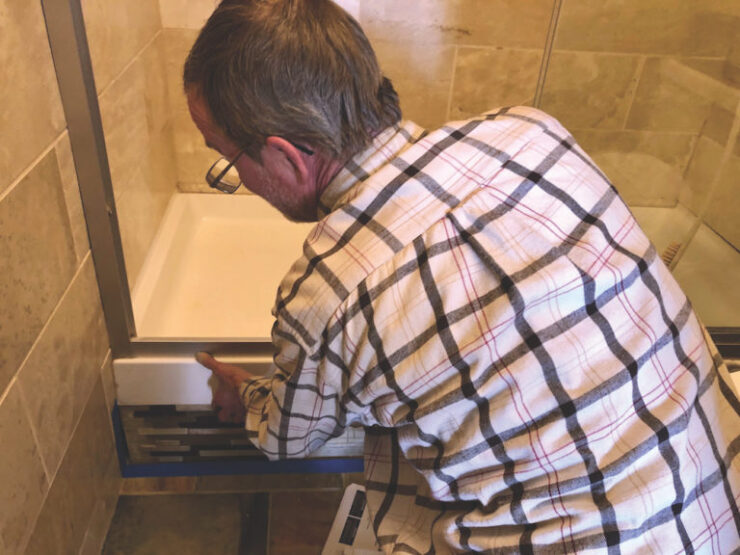
Quest for ceramic authenticity
Fink initially considered removing the fireplace’s unsightly brown tiles and sandblasting the bricks underneath. Upon further thought and consideration, he decided to replace the old tile — an endeavor that set him on a quest worthy of the Holy Grail.
From the beginning he knew he wanted a Craftsman look to honor the original style.
“I looked through about a half dozen books of photos of old Craftsman fireplaces to get ideas about patterns,” he explains, “measuring every aspect of our fireplace, drawing ideas out on graph paper, plotting where every tile would go.”
Conferring every step of the way with wife, Stephanie, the two “ultimately agreed on a design that used horizontal rectangular-shaped tiles of the same dimensions as the bricks underneath, with a very specific row of vertically oriented tiles for the bottom row (called a soldier’s row).”
Then, they envisioned tile mosaic inserts designed to imitate the stained-glass mosaics over their dining room buffet. Fink wanted these tile mosaics to have mullions (a slender vertical decorative element that forms a division between units of a window) and for the background “to look like you were looking through a window.”
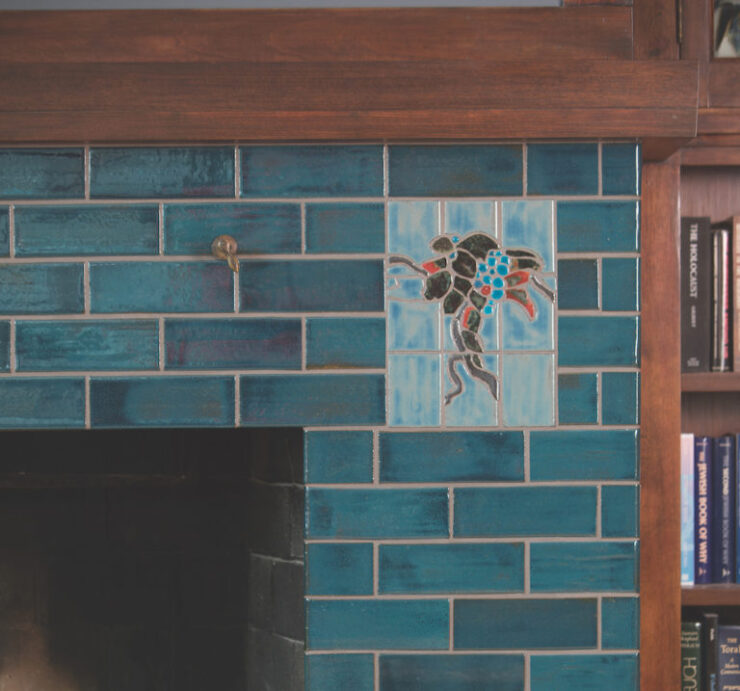
Customer/craftsman collaboration
While looking for tile ideas online, Fink came across the Handmade Tile Association website and noticed an exhibit the organization was holding at the Edina Art Center. It was there he met Josh Blanc, owner of Clay Squared.
Sold on the idea of tying the living and dining rooms together, Fink sketched out his precise ideas and brought them into Blanc’s shop. “Josh seemed to appreciate my detail orientation. He is a craftsman/artist who both knows the creative process and can provide guidance for thinking about the project in the context of the style and era of our house.”
Fink had found a collaborative and kindred spirit.
The key to any renovation project is active communication between the customer and the craftsman. Clay Squared operates a business model that encourages not only collaboration but also provides practical client educational tools to ensure success.
Blanc explains that his company “has created a series of learning tools and visual aids to help homeowners navigate the process of designing a tile project for their home. We provide items like planning guides for gardens, kitchens, bathrooms, and fireplaces. … We also offer a sample program so homeowners can take out sample tiles and design boards to see how they look in their home.”
Indeed, the Finks provided the high amount of backgrounding and knowledge that Blanc believes contributes to a superior final project. They brought in pictures of two dining room glass mosaics, scaled to the size they wanted the fireplace insets to be.
“Josh helped Stephanie and me pick colors for the grapes, branches, leaves, mullions and window glass from samples in the shop,” Fink says. “Then he created representative and abstract versions of the mosaic.”
Fink says that no explanation was too troublesome for Blanc, who believes each client deserves rapt attention and knowledge.
The resulting tiled fireplace (installed by Hohn & Hohn Inc.) is the centerpiece of the Fink home.
“Every time I look at the fireplace,” Fink states, “I’m just as happy with it as the day the tile was installed. We think it is beautiful.”
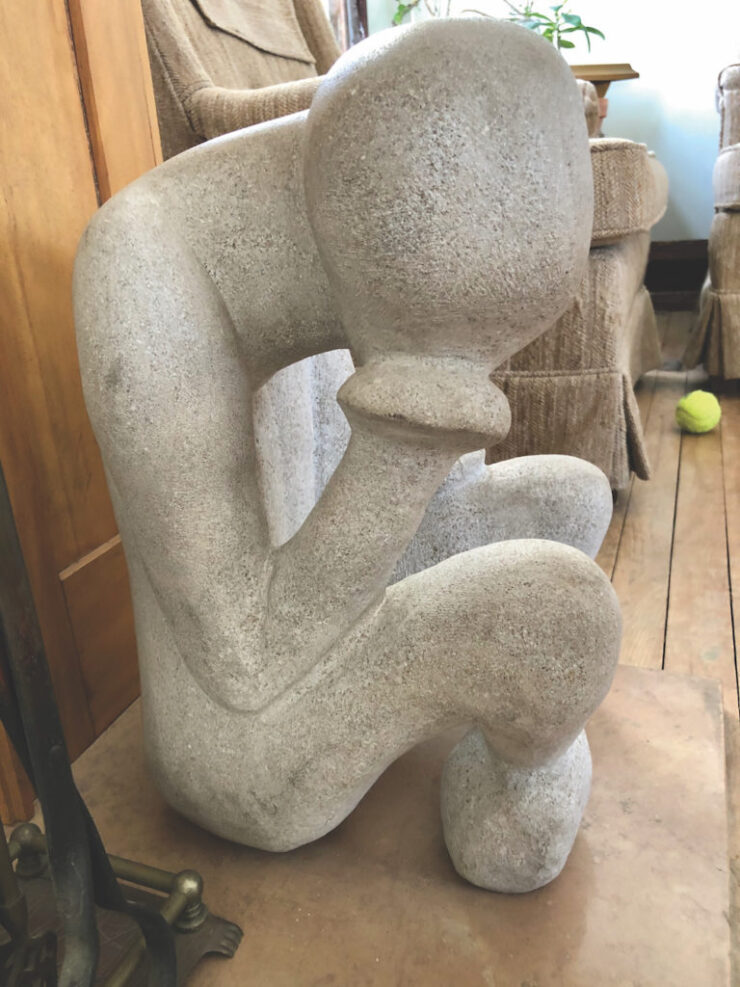
Setting it right
Once the project is scoped, and the tiles selected and made, the next critical step is installation.
The East Isles-based tile contractor Ian Cunningham understands better than most just how critical tile setting is. This unassuming craftsman is a veritable Tile Jedi — an Obi-Wan Kenobi in work boots, flannel shirt and blue jeans wielding his saber, a specialized tile saw.
Tile is as lovely as it is tricky and unforgiving. Whether custom or commercial, tiles are a combination of clay, minerals and solvents that are shaped and sized and then heated to very high temperatures. Most are then glazed, adding a non-porous element that’s usually impermeable and therefore good for all areas, including kitchens and baths, foyers and countertops. But before they’re set in grout, they are fragile and breakable.
This is where Cunningham’s art background and “good eye” set him apart from general contractors.
Graduating from the University of Minnesota with a fine art degree in 1978, Cunningham still recalls with great pride his senior show exhibit at the Weisman Art Museum. And for good reason: Gracing the downstairs of the stately Lake of the Isles mansion he inherited from his father and shares with wife, Michelle, sons, Jared and Ethan, perky Portuguese Water Dog, Rio, and cuddly cats, Rocky and Monty, Cunningham’s sensual sculptures testify to his artistic appreciation and ability.
“My first job was when I was 14,” he recalls, “laying tiles in a South Minneapolis duplex with a highly complex entryway. The general contractor couldn’t believe how easily I figured out the pattern, working the uneven surfaces to a final, smooth perfection.” And he was still a teen.
Tile installation is demanding work, much of it spent on all fours on cold, hard floors or squeezing into tight bathroom spaces working around immovable objects like the porcelain throne. Working with irreplaceable custom tiles requires dexterity and skill to get it right the first time.
Staying in business full time for almost 50 years, primarily through word-of-mouth, is an indication of the quality and desirability of Cunningham’s work. One recent project drew an amazed response from a fellow craftsman for the precision and speed with which Cunningham installed a tricky bathroom backsplash with a complicated pattern in just three hours.
“The cabinetmaker looked at me,” Cunningham says with a grin, “and exclaims it would have taken him three days, not three hours, to nail it!”
Such talent remains in high demand. Cunningham says a majority of his projects over the past years have come from one contractor, St. Paul-based Joe Hamel. With no website and only a flip phone, it’s safe to say the force truly is with Ian Cunningham. He gladly takes calls at 612-822-0304.
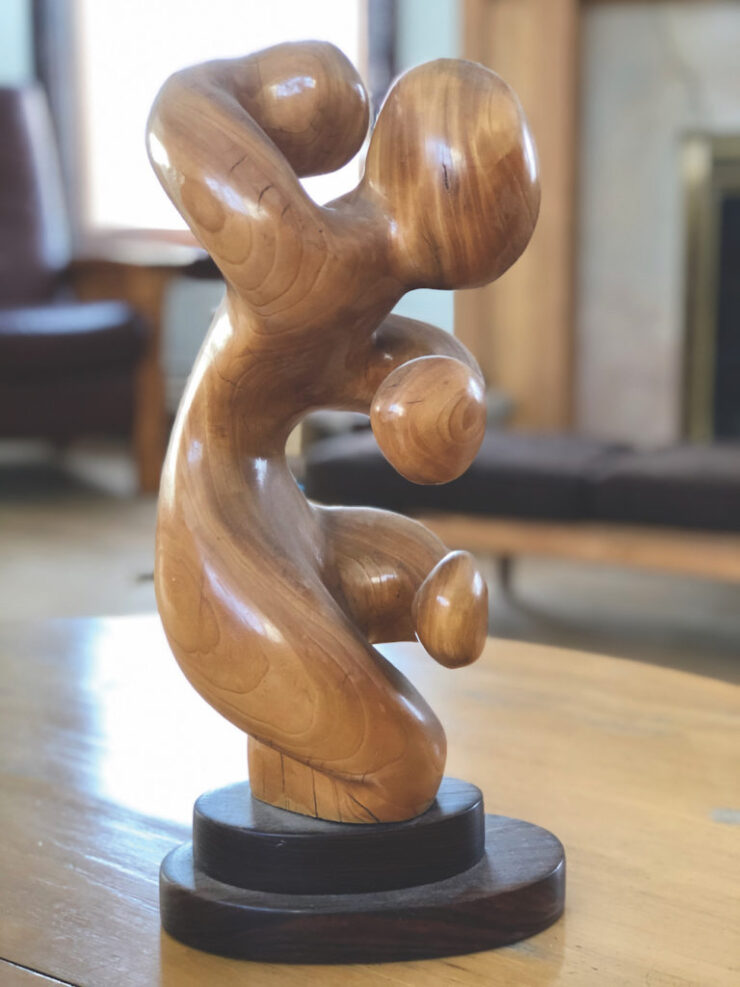
Tile: the frequent frontier
In 2018, more than 3 billion square feet of ceramic tile were installed in the United States.
Besides being beautiful, ceramic tile is a desirable surface: strong, colorfast, hygienic and flame-resistant. It doesn’t conduct heat or electricity, won’t absorb odors or emit hazardous chemicals, never swells or contracts in extreme temperatures and is easy to clean. And when it comes to floors, ceramic tiles are popular because of the large variety of choices, the cost effectiveness and the easy maintenance.
Just beware of prancing cats!

